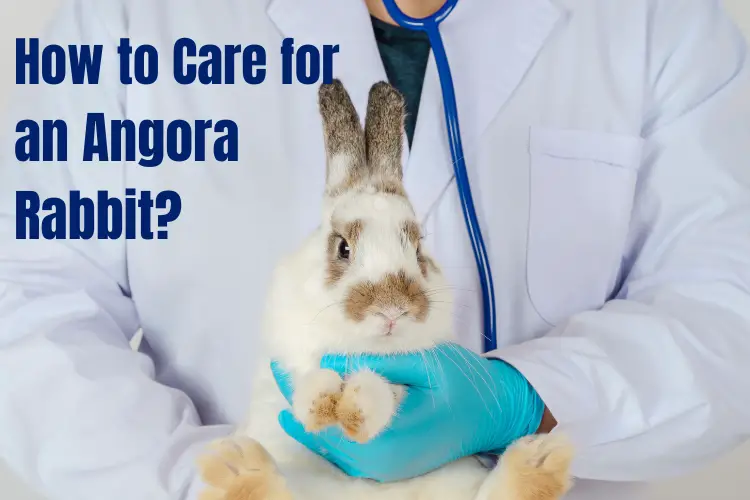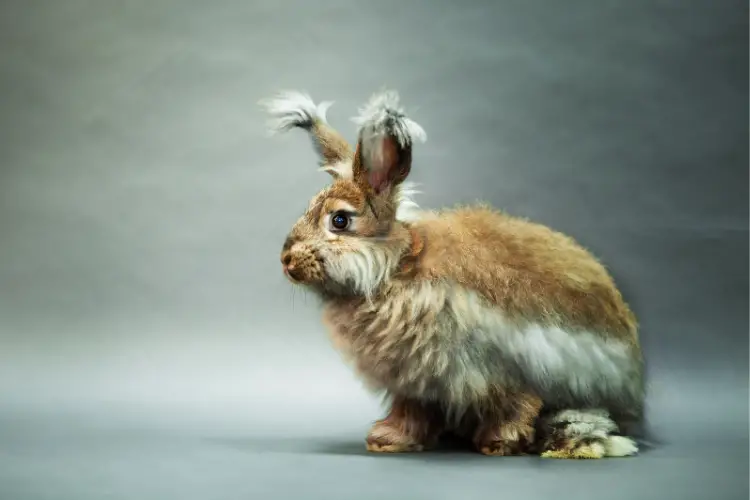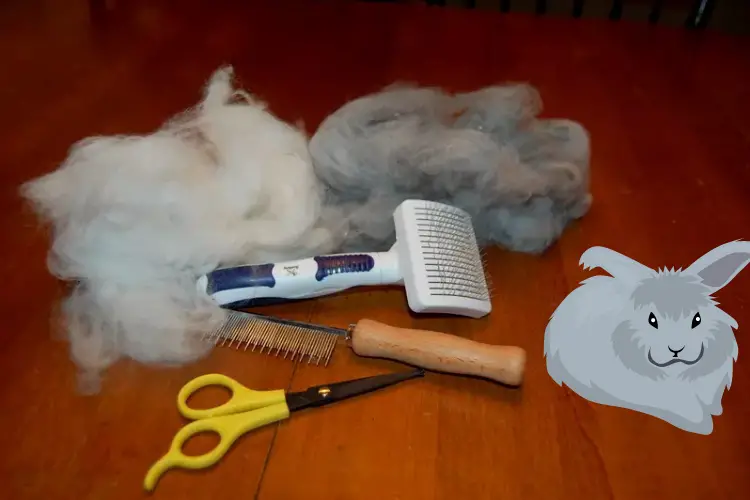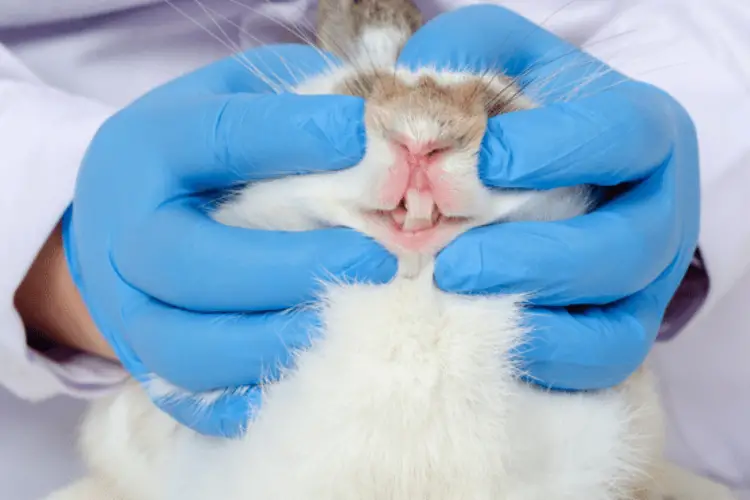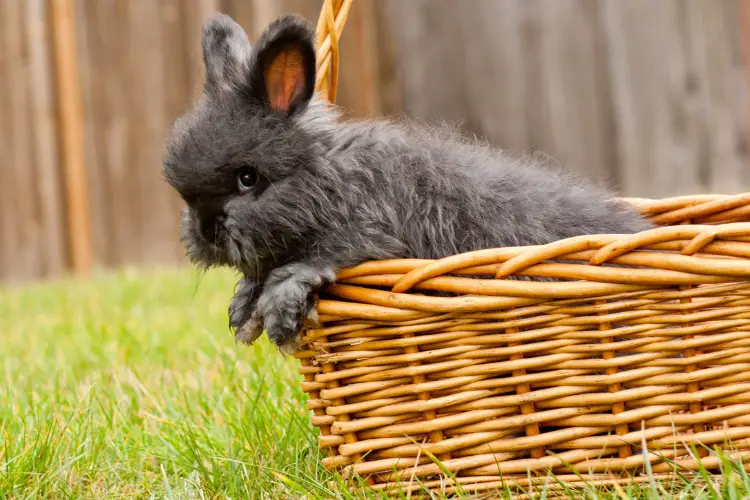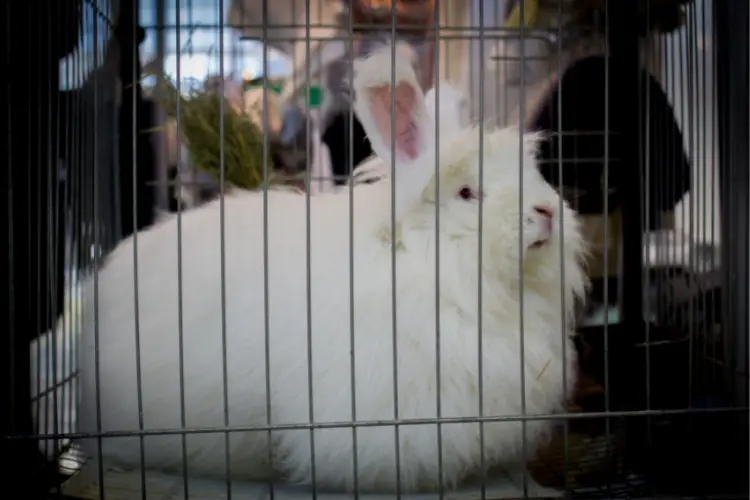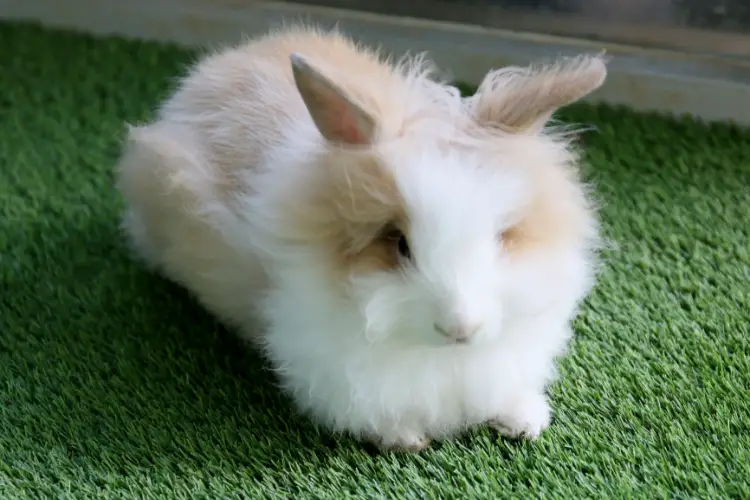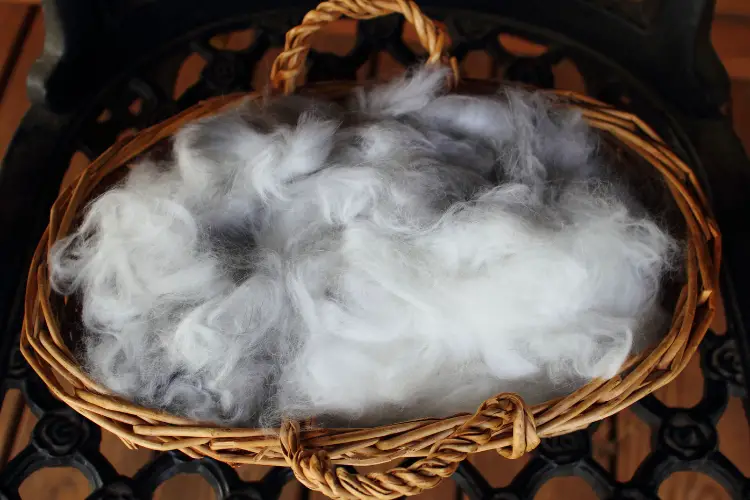Caring for an Angora rabbit involves not just regular grooming but also maintaining their health and ensuring a comfortable living environment. These fluffy companions require attention to detail in their diet, grooming routine, and habitat to thrive.
In this blog post guide, we will guide you through the essentials of Angora rabbit care, from grooming to health maintenance and environmental considerations.
Key Takeaways
- Regular grooming of Angora rabbits is essential for their coat health, with frequency adjusted for age, health conditions like arthritis, and dental issues.
- A high-fibre diet comprising mainly hay or fresh grass is crucial for dental health and gut function, while routine veterinary check-ups help prevent diseases.
- Indoor Angora rabbits require air conditioning due to their inability to sweat or pant, while outdoor rabbits need well-ventilated, clean, and protective hutches.
- Prevent heatstroke by providing extra water, shade, and cool environments during hot weather, and ensure rabbits are dry and warm during cold or rainy conditions.
- Adjusting care routines seasonally and being vigilant for signs of health issues during grooming can significantly improve an Angora rabbit’s quality of life.
Understanding Angora Rabbit Grooming Essentials
Frequency of Grooming Based on Age and Health
The frequency of grooming your Angora rabbit is not just a matter of routine; it should be tailored to their age and health status. Younger rabbits may require less frequent grooming, as their coats are not yet fully developed.
However, as they mature, the density and length of their fur increase, necessitating more regular grooming sessions. For adult Angora rabbits, daily brushing is essential to prevent matting and to maintain the health of their luxurious coat.
It’s important to note that older rabbits, or those with health issues such as arthritis or dental problems, may need even more frequent grooming. During these sessions, it’s crucial to inspect your rabbit’s coat for any signs of parasites or skin conditions.
Here is a simple guideline for grooming frequency:
- Young Rabbits (Under 6 months): Weekly grooming
- Adult Rabbits: Daily brushing
- Senior or Health-compromised Rabbits: May require more frequent grooming
Remember, grooming is also an opportunity to bond with your rabbit and to conduct a mini health check. If you encounter any abnormalities, such as lumps or itchy sores, consult your vet promptly.
As highlighted by The Cape Coop, you should plan on devoting about 20-30 minutes a week per rabbit for grooming, ensuring that you are comfortable handling your pet or have a professional groomer lined up.
Identifying Health Issues During Grooming
Grooming your Angora rabbit is not just about maintaining a pristine coat; it’s a critical opportunity to monitor their health. While brushing their fur, be vigilant for signs of parasites, such as fleas or mites, which may manifest as dandruff or itchy sores.
Part the fur to check for any dark specks that could indicate an infestation. It’s also essential to feel for any lumps, bumps, or abnormalities in the skin. These could be signs of more serious conditions and warrant immediate veterinary attention. Remember, early detection is key to successful treatment and recovery.
Here are some common health issues to look out for during grooming sessions:
- Weight loss or gain
- Dribbling or wetness around the chin
- Loss of appetite
- A dirty bottom or difficulty grooming themselves
- Overgrown teeth
- Watery eyes
- Lumps in their jaw
If you encounter any of these symptoms, it’s crucial to consult with your vet. A high fibre diet and regular check-ups can help prevent some of these issues, but always be proactive in seeking professional advice if you’re concerned about your rabbit’s health.
Choosing the Right Grooming Tools
Selecting the appropriate grooming tools is crucial for the care of your Angora rabbit. The right brush can make all the difference in maintaining your rabbit’s luxurious coat. A slicker brush, such as the HARTZ Slicker Brush, is highly recommended for its ability to gently detangle and remove loose fur without causing discomfort to your pet.
When considering grooming kits, the Lixit Grooming Kits For Rabbits offer a comprehensive solution, including brushes and combs specifically designed for rabbits. For those seeking a professional touch, the Kaytee Pro-Slicker Brush is a popular choice among rabbit enthusiasts.
It’s also important to have a variety of grooming tools to address different needs. Below is a list of top recommended brushes for Angora rabbits:
- HARTZ Slicker Brush
- Lixit Grooming Kits For Rabbits
- Kaytee Pro-Slicker Brush
- Small Pet Select – Rabbit Grooming Tools
Remember, regular grooming not only keeps your rabbit looking its best but also provides an opportunity to check for any skin issues or parasites.
Maintaining Your Angora Rabbit’s Health
The Importance of a High Fibre Diet
A high fibre diet is crucial for maintaining your Angora rabbit’s digestive health and dental well-being. Hay or fresh grass should constitute at least 85% of their diet, as it helps to continuously wear down their teeth and keeps their gut functioning properly.
While a small amount of pellets or fresh foods can be part of their diet, these do not wear down their teeth as effectively and should be given in moderation. Here’s a simple guideline to follow:
- 85% Hay or fresh grass – The staple of their diet, ensuring proper tooth wear and gut health.
- 10% Fresh vegetables – Provides essential vitamins and variety.
- 5% Pellets – A concentrated source of nutrients.
Regular veterinary check-ups are essential, especially if your rabbit has a history of dental disease. An improper diet lacking in fibre can lead to conditions such as GI stasis, which is painful and can become life-threatening if untreated.
Symptoms of GI stasis include a bloated tummy, reduced droppings, and loss of appetite. If you notice these signs, contact your vet immediately.
Regular Veterinary Check-Ups and Vaccinations
Ensuring your Angora rabbit receives regular veterinary check-ups is crucial for maintaining their overall health. These check-ups allow for early detection of potential health issues, including dental problems, which can be common in rabbits.
During these visits, your vet can also administer necessary vaccinations against diseases such as RHD 1, RHD 2, and myxomatosis, which are critical for your rabbit’s well-being.
Vaccinations are typically given annually and can start from as young as five weeks old. It’s important to consult with your veterinarian for the best vaccination schedule for your rabbit. Remember, a proactive approach to your rabbit’s health can prevent many diseases and ensure a happy, healthy life for your furry friend.
Here is a simple checklist for your rabbit’s health routine:
- Annual vaccinations
- Bi-annual health check-ups
- Monitoring for any signs of illness
- Immediate veterinary contact if abnormalities are detected
Spotting and Addressing Dental Problems
Angora rabbits, like all rabbits, have teeth that grow continuously. It’s crucial to monitor their dental health as overgrown teeth can lead to serious issues.
Signs of dental disease include weight loss, drooling, and a dirty bottom, indicating difficulty grooming. Regularly feeling your rabbit’s jaw for lumps can help spot abscesses early.
To prevent dental problems, ensure your rabbit’s diet wears down their teeth naturally. If you notice any signs of dental distress, consult your vet promptly. They may perform a dental examination and, if necessary, trim the teeth under anesthesia.
In cases where eating is a challenge, syringe feeding might be recommended to maintain gut health. Remember, early detection and treatment are vital for your rabbit’s well-being. Here’s a quick checklist for dental care:
- Monitor for signs of dental disease
- Provide a diet that naturally grinds down teeth
- Regularly check for jaw lumps or abnormalities
- Consult your vet for any concerns
By staying vigilant and proactive, you can help ensure your Angora rabbit maintains good dental health, avoiding the severe consequences that dental problems can bring.
Creating a Safe and Comfortable Environment
The Necessity of Air Conditioning for Indoor Rabbits
Angora rabbits, with their dense fur, are particularly vulnerable to overheating. Indoor environments must be kept cool to ensure their well-being, especially during warmer months. Unlike other pets, rabbits cannot sweat or pant effectively to regulate their body temperature, making them prone to heatstroke.
To maintain a safe temperature range for your Angora rabbit, it’s essential to monitor the indoor climate. The ideal temperature for rabbits is between 60°F to 72°F (15°C to 22°C). Here’s a simple guide to help you keep track of the temperature:
- 60°F – 65°F (15°C – 18°C): Comfortable
- 65°F – 72°F (18°C – 22°C): Ideal
- Above 72°F (22°C): Caution
In addition to air conditioning, providing ventilation and shade is crucial. Ensure that your rabbit’s living area is away from direct sunlight and that there is a constant flow of fresh air. Remember, the sun’s position changes throughout the day, so areas that are shaded in the morning may be exposed later on.
Regularly check and adjust your rabbit’s environment to keep them cool and comfortable.
Protecting Your Outdoor Rabbit from Extreme Weather
Outdoor rabbits require special attention to ensure their well-being during extreme weather conditions. Cold, wetness, and high winds can lead to stress and health issues in rabbits, as they are sensitive to chilling. It’s crucial to provide a shelter that is well-protected from these elements.
To safeguard your rabbit from the cold and rain, consider the following steps:
- Ensure the rabbit’s hutch is waterproof and raised off the ground to prevent dampness.
- Provide ample straw or hay for insulation and burrowing.
- Cover the hutch with a tarpaulin or specially designed cover during bad weather.
In hot weather, rabbits are at risk of heatstroke since they cannot sweat and rely on panting and their ears to regulate body temperature. To help your rabbit stay cool:
- Offer extra water to prevent dehydration.
- Create shaded areas within the enclosure, and remember that the sun’s position changes throughout the day.
- Consider moving the hutch to a shaded, well-ventilated area or indoors during extreme heat.
Ensuring Proper Ventilation and Cleanliness
Proper ventilation is crucial for maintaining the health and well-being of your Angora rabbit. Adequate airflow prevents the buildup of ammonia from urine and reduces the risk of respiratory issues. To ensure good air quality, regularly clean the rabbit’s living area and replace bedding materials as needed.
Maintaining cleanliness is not only about the rabbit’s habitat but also about the hygiene of the rabbit itself. A clean rabbit is less likely to develop skin infections or parasite infestations. Here are some steps to keep your rabbit and its environment clean:
- Perform daily spot cleaning of the rabbit’s living area.
- Conduct a thorough cleaning of the habitat at least once a week.
- Regularly groom your rabbit to remove loose fur and prevent matting.
- Check for any signs of illness, such as changes in breathing or the presence of lumps, and consult your vet if necessary.
Remember, a clean environment is a fundamental aspect of your rabbit’s care routine and contributes significantly to its overall health.
Managing Your Rabbit’s Comfort During Extreme Temperatures
Preventing Heatstroke in Hot Weather
Angora rabbits are particularly vulnerable to heatstroke, as they cannot sweat and rely on panting and their ears to regulate body temperature. Ensuring your rabbit stays cool during hot weather is crucial to prevent heat-related illnesses.
To aid in keeping your rabbit comfortable, follow these steps:
- Provide ample water to ensure hydration.
- Create shaded areas within the enclosure, and remember that the sun’s position changes throughout the day.
- Consider using cooling accessories like ceramic tiles or frozen water bottles for your rabbit to lean against.
- Regular grooming helps remove excess fur, which can trap heat.
Be mindful of the temperature range for rabbits; ideally, they should be kept in environments between 12°C to 21°C (55°F to 70°F). Temperatures above 30°C (85°F) can pose a significant risk of heatstroke. Always monitor your rabbit closely during hot weather and take immediate action if you notice signs of distress or overheating.
Keeping Your Rabbit Dry and Warm in Rainy and Cold Conditions
Angora rabbits, with their luxurious coats, are particularly sensitive to cold and damp environments. Providing a warm, dry shelter is crucial for their well-being during the colder months. Ensure that your rabbit’s living area is free from drafts and moisture, which can lead to health issues and discomfort.
Insulation is key when it comes to protecting your rabbit from the chill. Here are some effective ways to insulate your rabbit’s habitat:
- Use thick bedding materials like straw or hay, which retain heat well.
- Consider adding a safe, pet-friendly heating pad to the sleeping area.
- Place the hutch in a location that is shielded from wind and rain.
Remember, a rabbit that is cold and wet can become stressed, which in turn can suppress their immune system. By taking these steps, you can ensure your Angora rabbit remains a picture of health, even when the weather is less than ideal.
Adjusting Care Routines for Seasonal Changes
As the seasons shift, so should your approach to caring for your Angora rabbit. During molting periods, it’s crucial to monitor not only the physical changes in your rabbit’s coat but also behavioral cues.
A change in your rabbit’s temperament can be a subtle sign of discomfort or stress associated with molting. Be extra vigilant and gentle when grooming during these times.
In addition to regular grooming, adjusting your rabbit’s environment is key to their well-being. Here’s a quick checklist for seasonal adjustments:
- Ensure adequate water supply and shade in hot weather.
- Monitor weight monthly to detect any health issues early.
- Provide a stable temperature range, ideally between 10-20°C.
- Watch for signs of fly strike, particularly in warmer months.
Remember, rabbits are sensitive to prolonged solitude. Avoid leaving your rabbit alone for extended periods, as this can lead to stress and health complications. Always tailor your care routine to the current season and your rabbit’s specific needs.
Conclusion
Caring for and grooming an Angora rabbit involves a commitment to regular maintenance and a keen eye for their health and well-being. From ensuring a high-fiber diet to keeping up with annual vet check-ups, every aspect of their care is crucial.
Grooming is not just about keeping their luxurious coat in top condition, but also serves as an opportunity to check for any signs of health issues, such as lumps, bumps, or parasites. Remember that environmental factors play a significant role in their comfort, so providing a cool, well-ventilated space, especially during hot weather, is essential.
By following the advice of veterinary professionals and staying vigilant about your rabbit’s needs, you can ensure that your fluffy companion remains happy, healthy, and well-groomed.
FAQs:
How often should I groom my Angora rabbit?
Angora rabbits with long hair need to be brushed once a day to prevent matting, while those with a short coat should be groomed once a week. Older rabbits or those with health issues like arthritis or dental problems may require more frequent grooming.
What should I look for during grooming to ensure my rabbit’s health?
Check for lumps, bumps, dandruff, mites, fleas, or itchy sores while grooming. If you notice any abnormalities, consult your veterinarian for advice.
What is the importance of a high fibre diet for Angora rabbits?
A high fibre diet is crucial for Angora rabbits as hay or fresh grass should make up at least 85% of their diet. This helps continuously wear down their teeth and keeps their gut healthy.
Do Angora rabbits require air conditioning?
Yes, Angora rabbits must live indoors with air conditioning, especially in hot climates, as they cannot sweat or pant to cool themselves and are at high risk for heatstroke.
How can I keep my outdoor Angora rabbit safe and comfortable?
Outdoor rabbits need clean living areas free from manure daily, a hutch with good ventilation to reduce stress and the risk of respiratory infections, and protection from extreme weather.
How do I manage my Angora rabbit’s comfort during extreme temperatures?
Prevent heatstroke by providing extra water, plenty of shade, and keeping them cool in hot weather. Ensure they stay dry and warm in cold conditions, and adjust their care routines for seasonal changes.

